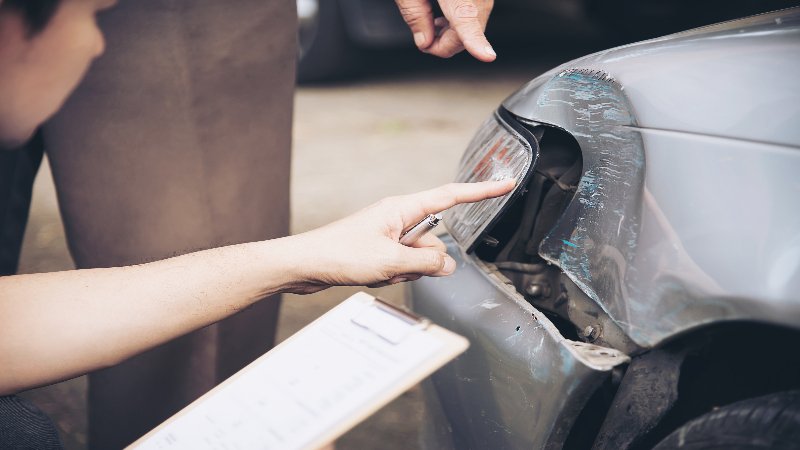Hit-and-run accidents can be very traumatic for victims, causing physical injuries and the emotional burden of dealing with an unknown perpetrator. The sudden nature of these accidents often complicates the recovery process—both medically and financially. When the responsible driver flees the scene, victims may feel uncertain about how to pursue justice.
However, auto injury attorneys play a crucial role in providing victims with viable options. They understand the unique challenges involved in these cases and navigate the legal pathways to help secure compensation and hold those responsible accountable.
We will explore how auto injury attorneys handle hit-and-run cases, focusing on the steps they take, the resources they use, and the strategies that make a difference in achieving justice.
Steps Auto Injury Attorneys Take in Hit-and-Run Cases
1. Conducting a Detailed Case Evaluation
The first step Bronx auto injury attorneys take in a hit-and-run case is to perform an in-depth evaluation of the incident. This begins with reviewing police reports, medical documentation, and any available witness statements. Attorneys work closely with victims to understand the timeline of events, identifying critical details that may help locate the fleeing driver.
This evaluation helps determine potential sources of recovery, such as the victim’s uninsured motorist coverage, which can provide compensation when the at-fault party remains unidentified. In addition, attorneys assess the extent of the victim’s injuries and damages to establish a clear financial claim.
This first step is crucial because it lays the groundwork for all the legal steps that will follow, making sure that the case is handled quickly and accurately.
2. Collaborating with Law Enforcement and Investigators
Once an attorney has a grasp of the case details, they often collaborate with law enforcement officers and private investigators to track down the responsible driver. Attorneys can review surveillance footage from nearby businesses, traffic cameras, and even doorbell cameras to identify potential leads. Attorneys also use vehicle debris, paint transfer, or witness descriptions to help narrow down potential suspects.
When law enforcement resources are scarce, attorneys can independently engage accident reconstruction specialists to carry out scene analysis. Their goal is not only to locate the hit-and-run driver but also to ensure that every piece of evidence is properly documented to support the victim’s claim.
This cooperative approach between attorneys, police, and investigators increases the likelihood of identifying the driver and securing justice.
3. Navigating Uninsured Motorist (UM) and Underinsured Motorist (UIM) Claims
In many hit-and-run cases, the at-fault driver cannot be located or identified. In such situations, attorneys assist victims in filing claims under their own uninsured motorist (UM) coverage. This type of insurance is specifically designed to protect individuals injured by drivers who flee the scene or lack insurance.
Attorneys meticulously review the insurance policy to guarantee the victim receives all the entitlement compensation. They handle negotiations with insurance companies, which sometimes attempt to minimize payouts or deny valid claims. By presenting medical evidence, witness accounts, and accident reconstructions, attorneys advocate for fair settlements.
This process requires persistence and a thorough understanding of insurance law, ensuring that the victim’s rights are fully protected even when the responsible driver is never found.
4. Building a Strong Legal Case for Compensation
Even after identifying the hit-and-run driver, the process of proving liability and obtaining fair compensation can be complex. Auto injury attorneys build a compelling case by compiling all relevant evidence, such as photographs, witness statements, and expert testimonies.
They use this evidence to establish negligence and demonstrate how the driver’s actions directly caused the victim’s injuries and losses. Attorneys also calculate the full scope of damages, including medical expenses, property damage, lost wages, and emotional distress. If the driver is caught, they may face both civil and criminal penalties.
The attorney ensures that the civil case runs in parallel to any criminal proceedings without compromising the client’s claim. The strength of this legal case often determines whether the victim receives a fair settlement or needs to proceed to trial.
5. Representing the Victim in Court if Necessary
Insurance settlements or negotiations resolve many hit-and-run cases, but some cases necessitate court intervention. If the insurance company fails to offer fair compensation or the at-fault driver contests liability, the attorney prepares for litigation. The procedure involves drafting legal complaints, attending pre-trial hearings, and representing the victim before a judge or jury.
Attorneys present clear evidence of the hit-and-run incident, the damages incurred, and the emotional toll it has taken on the victim’s life. They may bring in medical professionals or accident reconstructionists to testify about the impact of the crash. Through representation, attorneys aim to ensure that victims receive the justice they deserve.
Pursuing a civil case against available insurance coverage can still lead to a significant financial recovery, even if the driver remains unlocated.
Final Thoughts
Handling a hit-and-run case requires persistence, detailed investigation, and a profound understanding of both legal and emotional complexities. Auto injury attorneys play a crucial role in helping victims rebuild their lives after such traumatic events.
Through careful case evaluation, collaboration with investigators, negotiation with insurance companies, and, when necessary, courtroom representation, they ensure that victims receive fair compensation and a sense of closure.
Their role goes far beyond legal paperwork—they provide strength, guidance, and accountability in situations where victims often feel powerless.
